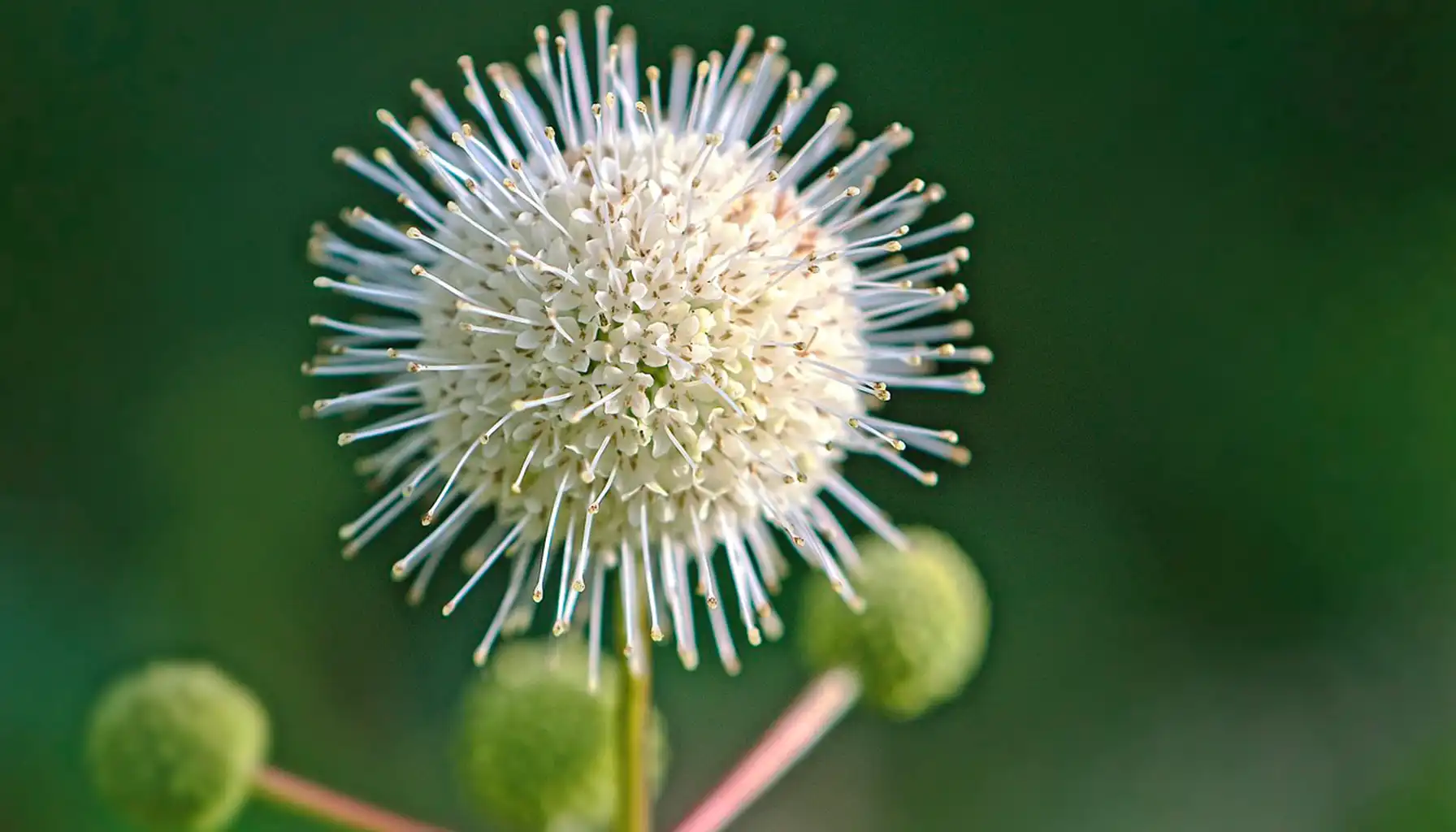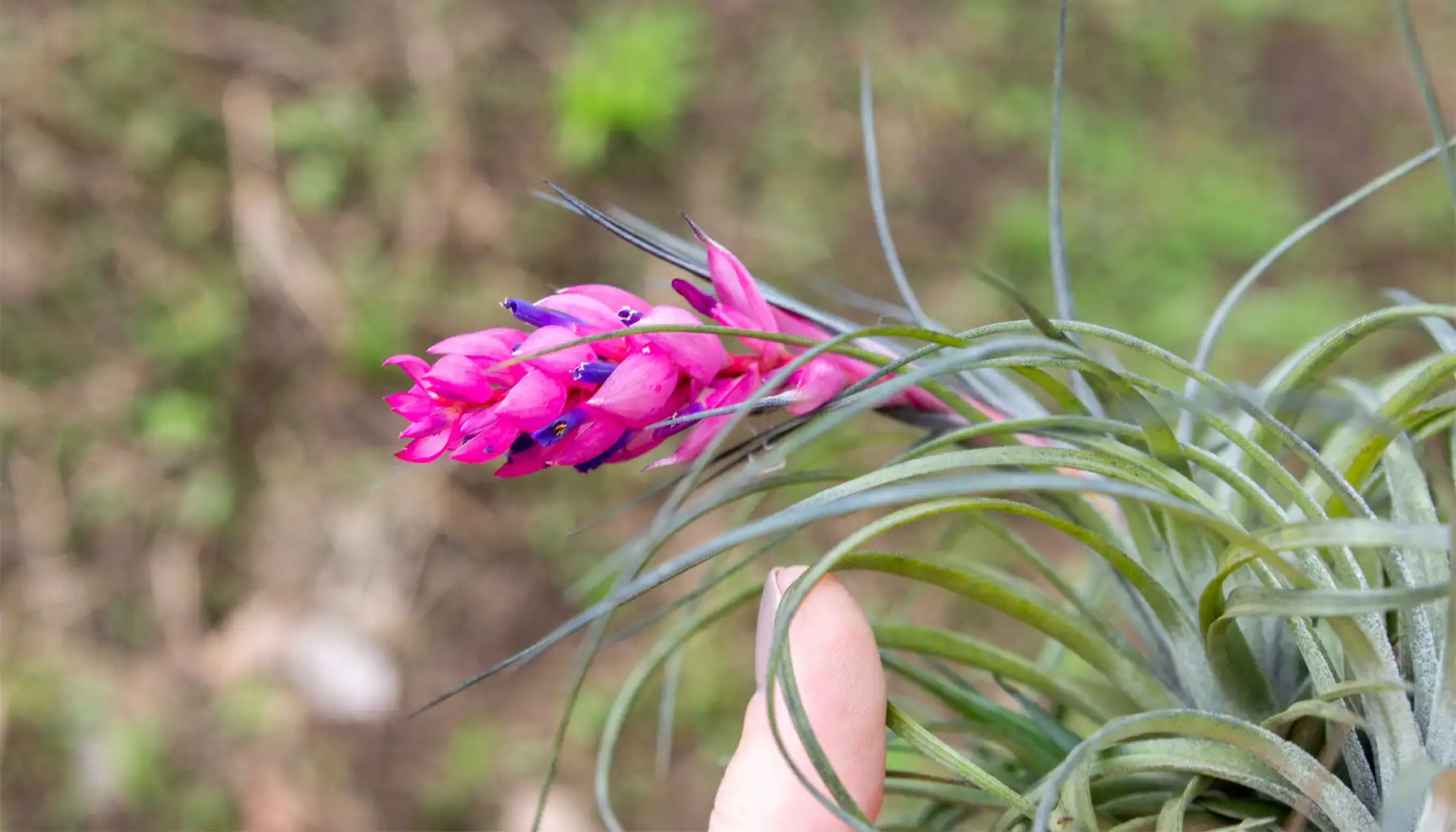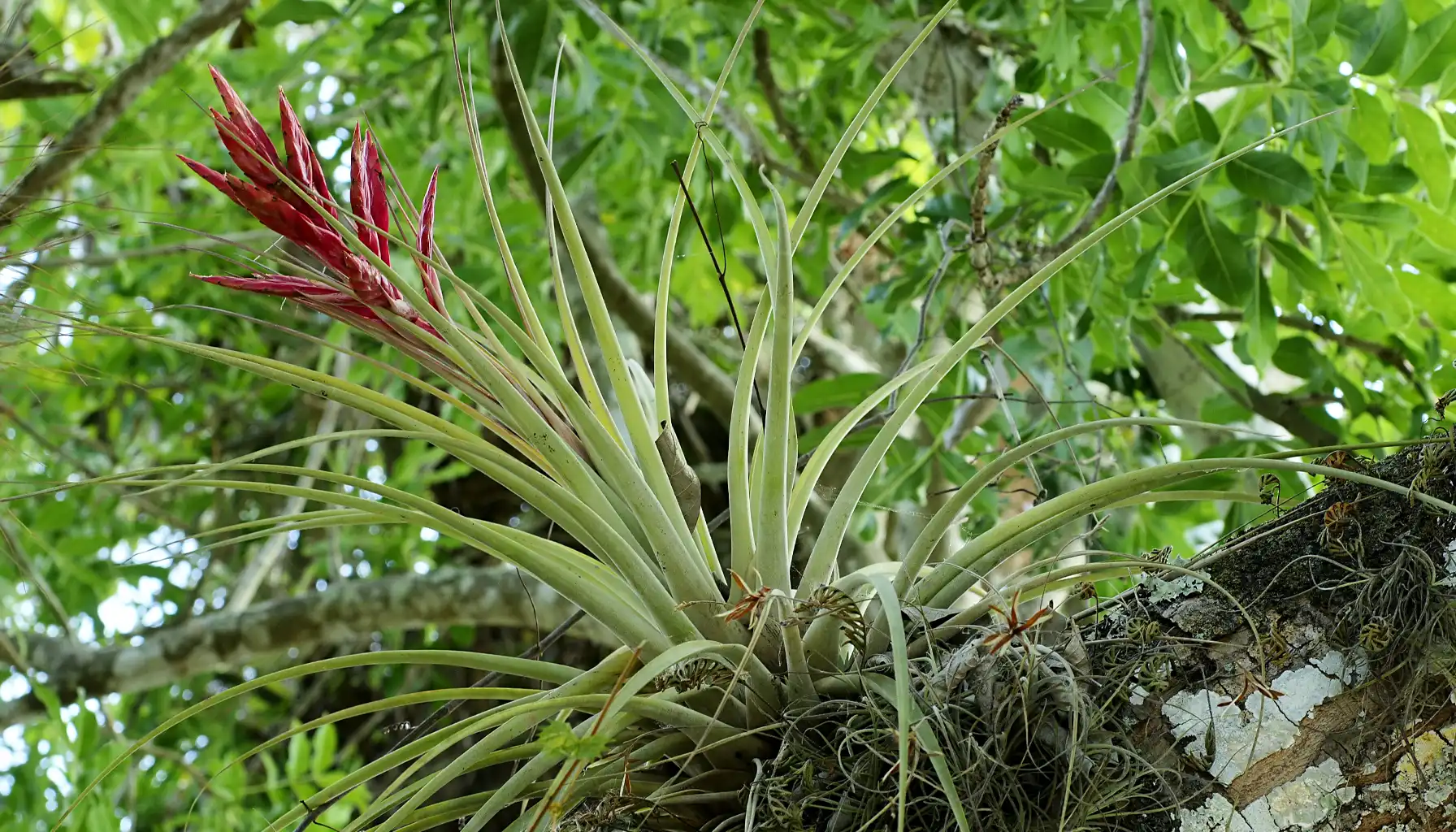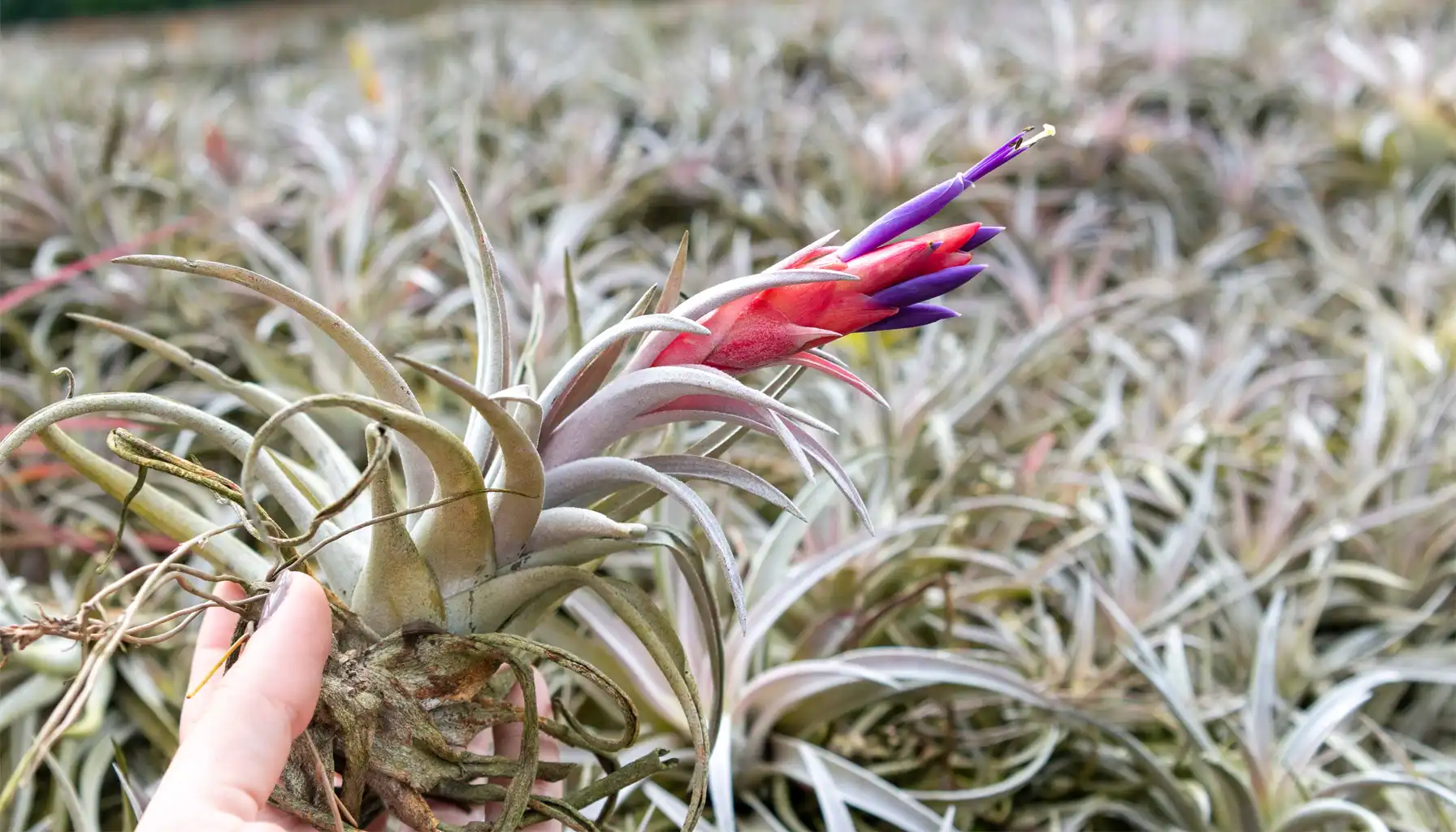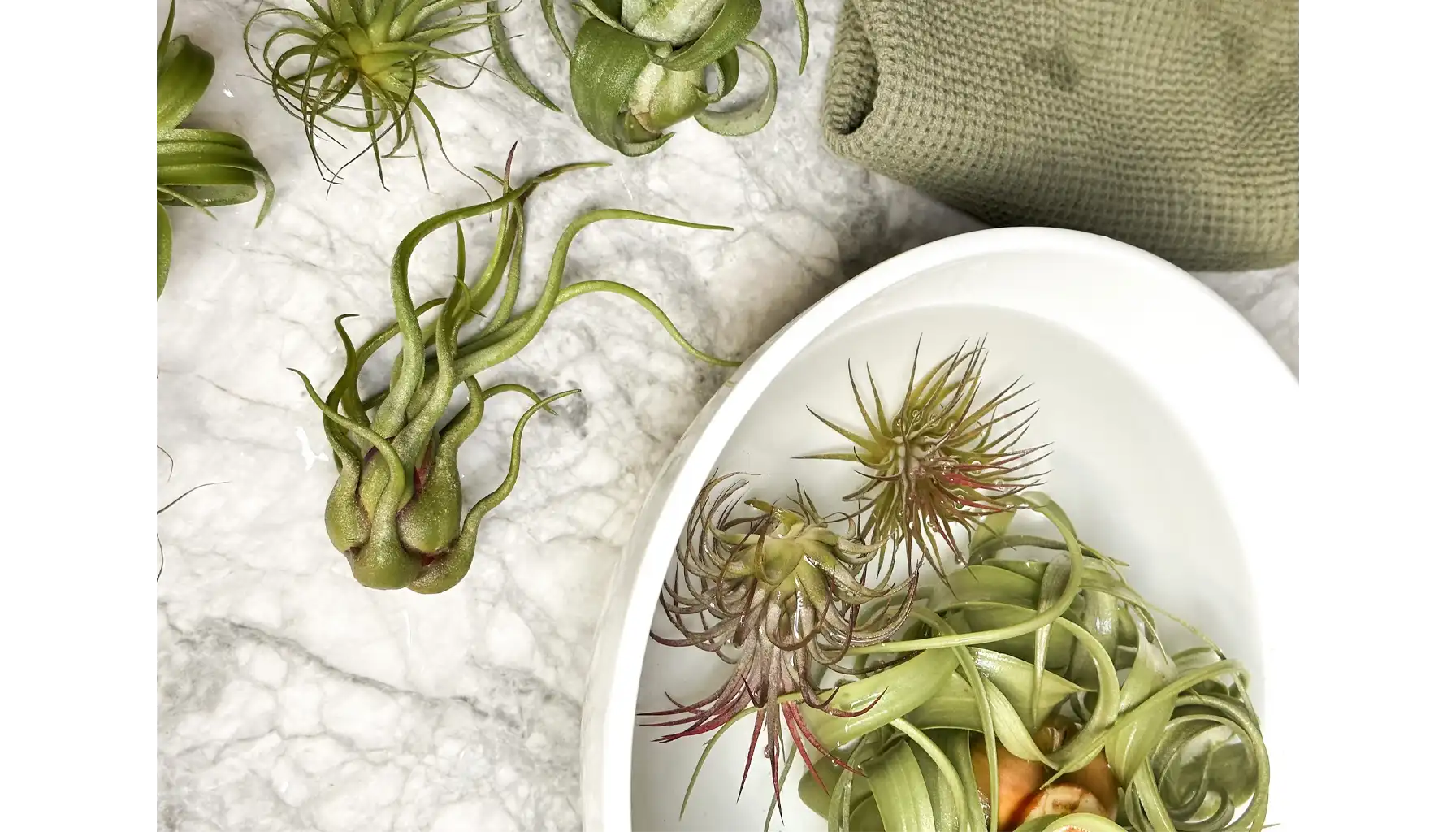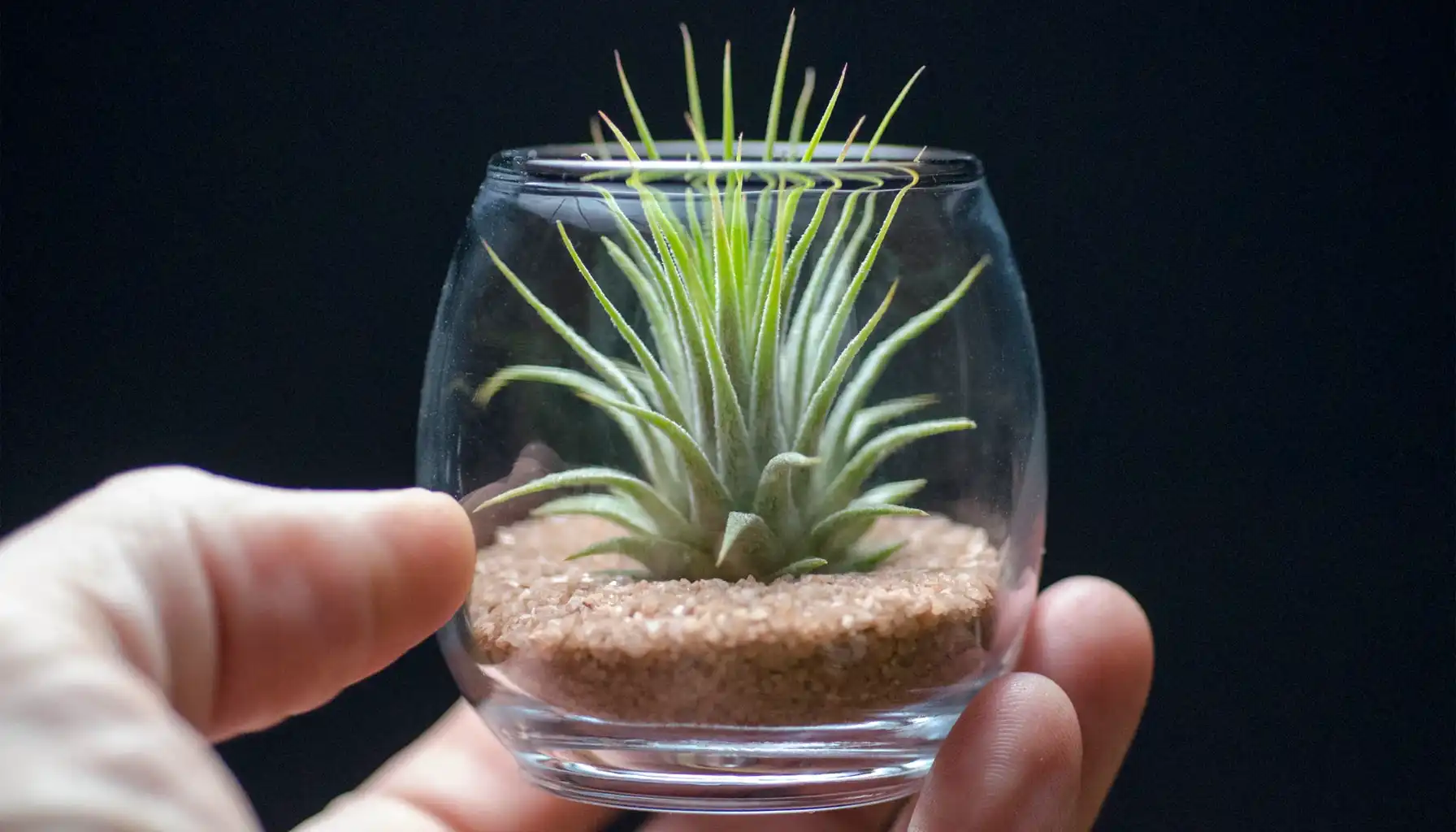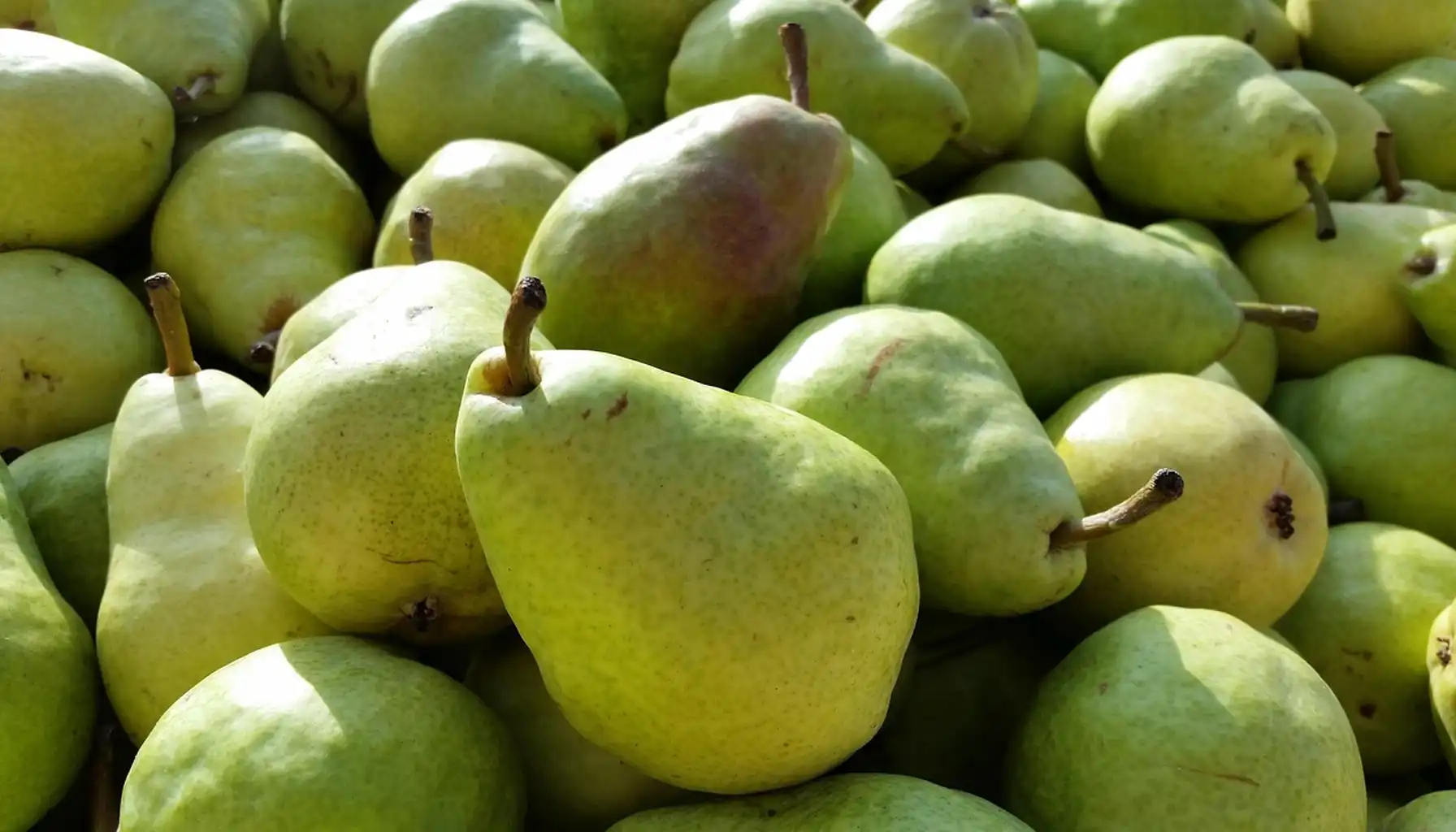What kind of plant is this? Air Plant (Tillandsia) refers to a large genus of epiphytic plants in the Bromeliad family (Bromeliaceae). It’s native to the forests, mountains, and deserts of Central and South America, Mexico and the southern U.S. Tillandsias are unique for their ability to grow without soil.
Tillandsias absorb moisture and nutrients through their trichomes — tiny scales on their leaves — rather than through roots. Their roots, when present, are mostly used for anchoring to trees, rocks or other surfaces. They don’t require a pot or soil, which is why they’re commonly called “air plants.”
There are over 600 species of Tillandsia, ranging from soft, fuzzy-leaved types (like T. tectorum) to smooth, glossy ones (like T. bulbosa). Common Air Plant types include T. ionantha, T. xerographica, T. caput-medusae and T. aeranthos.
Physical Appearance
Leaves: Often narrow, spiky, and silvery or green depending on the species.
Size: Ranges from under 2 inches to over 12 inches in length.
Flowers: Many species produce tubular flowers in purple, pink or red.
Life cycle: After flowering (a once-in-a-lifetime event), it produces “pups” (offsets), then gradually dies.
Is it an air filtering plant?
Tillandsias do have some air-purifying properties, but they are not among the most effective air purifier plant pieces when compared to broad-leaved ones like snake plant or peace lily.
Tillandsias can absorb certain airborne particles and moisture through their leaf trichomes.
In controlled environments, they may reduce small amounts of VOCs (volatile organic compounds) like formaldehyde or benzene.
Because they don’t require soil, they also don’t introduce mold spores or allergens from potting media.
Limitations
Their small size and low surface area mean they filter much less air than larger ones.
They don’t transpire (release water vapor) as much as leafy plants, so they contribute less to indoor humidity regulation.
Also read: Best indoor plant for air quality.
How to Care for an Air Plant
Unlike most plants, these ones don’t grow in soil—they absorb water and nutrients through their leaves. Here's how to keep them healthy:
Light
They love bright, indirect light. A spot near a sunny window (east or south-facing) is perfect. Direct sun for long hours can dry them out or scorch the leaves, especially thin-leaved varieties. In darker rooms, you can use fluorescent or LED grow lights for 12 hours a day.
How to Water an Air Plant
Soaking Method (Recommended): Once or twice a week, submerge it fully in room-temperature water for 20–30 minutes. After soaking, shake off excess water and place it upside-down on a towel in a well-ventilated area to dry completely within 4 hours.
Misting: Light misting Air Plant watering can be done between soakings, especially in dry indoor air, but misting alone is not enough long term.
Tip: How to water Air Plant if you see any problems with it? If leaves start to curl or feel crispy, it needs more water. If the base turns dark or mushy, it’s getting too much.
Air Circulation
They need good airflow to stay healthy and dry after watering. Avoid enclosing them in sealed glass terrariums unless they have large openings. Stagnant, humid air leads to rot.
Temperature
Tillandsias prefer temperatures between 10°C and 32°C (50°F–90°F). They are not frost-tolerant—keep them indoors or bring them in during cold weather.
Air Plant Fertilizer
You can fertilize once a month using a bromeliad or specific fertilizer, diluted to one-quarter strength. This helps with blooming and pup production, especially in mature plants.
Maintenance
Remove any brown or dead leaves by gently pulling them off.
If the tips are browning, you can trim them with scissors (at an angle, to mimic the leaf shape).
After flowering, it will begin producing pups (offsets). Once the pup is about ⅓ the size of the parent, it can be separated and grown individually.
Why Clean Air Plant?
Dust, hard water buildup, or pollutants can clog the trichomes (specialized leaf structures that absorb moisture and nutrients). So, it will be harder for the plant to breathe. Cleaning also prevents rot and disease.
1. Rinse with Water
Use room-temperature water (preferably rainwater, filtered, or distilled). Gently rinse it under a light stream of water to remove surface dust, dirt or debris.
2. Deep Soak (If Needed)
If buildup is heavier:
Soak it in clean water for 20–30 minutes.
For mineral deposits or white residue, add a splash of vinegar to the water (1 part white vinegar to 4 parts water) and soak for 10 minutes only.
Rinse thoroughly afterward to remove any vinegar residue.
3. Remove Dead Leaves
Gently tug off any dead, brown leaves from the base. Use clean scissors to trim brown tips or dried flower stalks—cut at an angle for a natural look.
4. Dry Completely
After rinsing or soaking, shake off excess water and place it upside down on a towel in a well-ventilated spot. Let it dry fully within 4 hours to prevent rot.
What Not to Do
Don’t use soap or leaf polish.
Don’t scrub or wipe the leaves.
Don’t soak too long (over 1 hour can cause rot).
Don’t let water sit in the base of the plant.
How to Propagate Air Plants at Home
1. Pup Division (Main Method)
Air plants reproduce naturally through pups—small offsets that grow at the base of the mother plant after it blooms. This is the primary and most reliable way to propagate Tillandsias at home.
Wait until the pup reaches about 1/3 to 1/2 the size of the parent.
Gently pull or twist the pup from the base. If it resists, let it grow a bit more.
Use clean fingers or sterilized scissors if needed.
Let the separated pup rest for a few hours before watering.
Care for it like a mature plant: indirect light, weekly soaking, and airflow.
A healthy mother plant can produce 2–8 pups before it fades.
2. Seed Propagation (Advanced & Rare)
While possible, growing them from seed is extremely slow—it can take 5–8 years for a seedling to become a mature, blooming plant.
Collect seeds from pollinated air plant flowers (you’ll see seed pods form and split).
Sow them on a fine mesh or screen where airflow is good and moisture is consistent.
Mist daily using filtered water.
Keep them in a bright, protected environment away from direct sun.
3. Encourage Pup Production
You can stimulate pup growth by providing ideal care conditions:
After blooming, don’t discard the mother plant.
Increase light exposure slightly (still indirect).
Fertilize monthly with a bromeliad or air plant fertilizer to promote reproduction.
Maintain consistent hydration and airflow.
What You Can’t Do:
Air Plant Display Ideas
Idea | Description | Tips |
Driftwood & Branches | Attach them to natural wood or vines for an organic, rustic look. | Use non-toxic glue or wire; ideal for wall or shelf displays. |
Hanging Frames or Grids | Air plants are tucked into open frames or wire grids for vertical displays. | Ensure good airflow when choosing an air plant hanger; rotate for even light exposure. |
Glass Terrariums | Air plant terrarium ideas include clear, open containers filled with sand, rocks, or moss and Tillandsia. | Must be open for ventilation; avoid overwatering. |
Mounted on Stones/Crystals | Plants are glued or placed on decorative stones or geodes. | Use waterproof adhesive sparingly; looks artistic and minimal. |
Hanging Ornaments/Mobiles | They are suspended from strings, wire, or macramé for a floating effect. | Hang near bright windows; mist more often due to air exposure. |
Vintage Air Plant Holders | Repurpose items like teacups, shells, or corks for quirky displays. | Don’t crowd; allow for airflow and easy removal during watering when choosing air plant holder ideas. |
Magnetic Mounts | Mini magnets hold them on boards, fridges, or lockers. | Easy to rearrange; keep away from drafts or heat sources. |
Wall Pockets & Ceramics | Use decorative wall-mounted containers shaped like pockets or hands. | Best air plant ideas are in bright rooms; remove plants for weekly soaking. |
FAQs
What is an Air Plant?
A Tillandsia air plant is a soil-free epiphyte that absorbs water and nutrients through its leaves instead of roots. Native to the Americas, it grows on trees, rocks, and other surfaces. Tillandsias are part of the Bromeliad family.
Can an Air Plant bloom?
Yes. Most of them bloom once in their lifetime. They produce colorful flowers in shades of purple, pink, red or yellow. After blooming, they enter a reproductive phase and produce offsets (pups) before the mother plant gradually dies.
What is a jellyfish Air Plant?
It’s a playful display where a plant is inserted into an upside-down sea urchin shell, then hung with a clear line to mimic a jellyfish. The trailing leaves resemble tentacles. It’s a popular marine-themed decor item.
Where can I buy air plants?
They are available at shops, botanical gardens, craft stores, and many online retailers. Search for “air plant shop” or “Tillandsia for sale” to find local or specialty sellers.
Is Tillandsia an air purifying plant?
They do have some air-purifying qualities, but they are not as effective as larger leafy ones like snake plant air purifier or pothos. However, they do contribute to overall indoor air freshness and can remove small amounts of toxins from the air.
Related AI Plant Finder Posts
